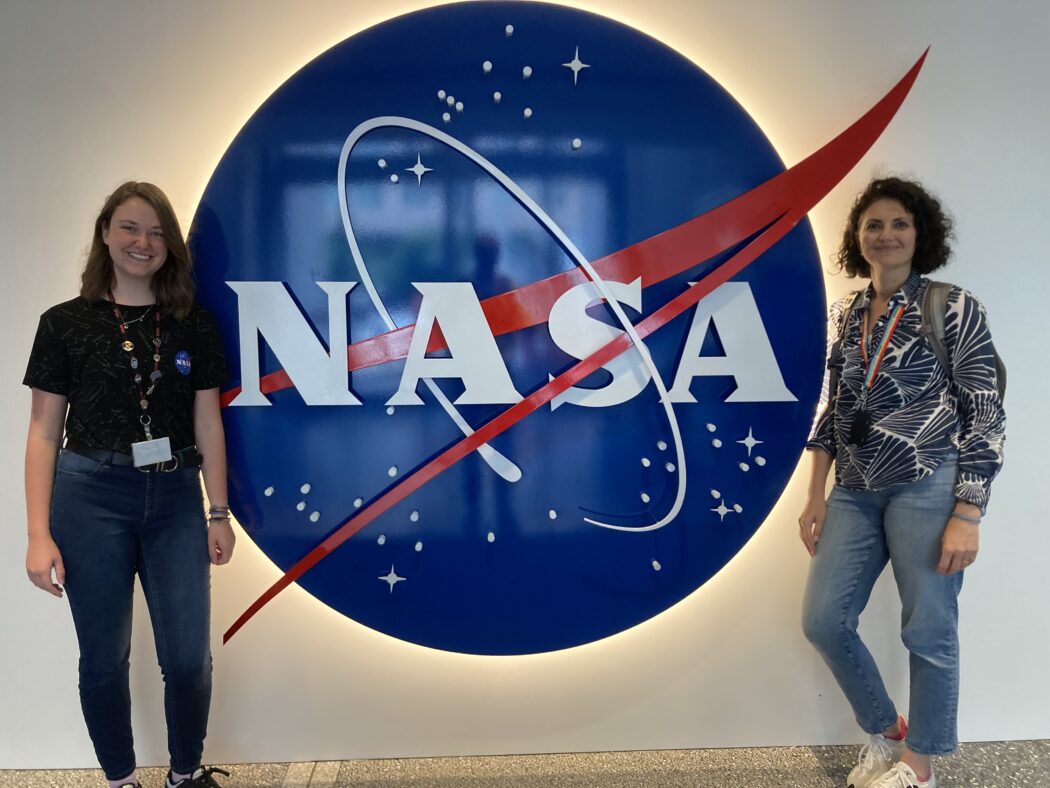Working for NASA: My summer writing experience
What does it take to reach the stars? Literally speaking, a lot of engineering, calculations and rocket fuel. Figuratively? A simple acceptance letter in my inbox from none other than NASA Goddard Space Flight Center, where I spent my summer as an intern capturing the stories of space exploration.
I believe the experience gained in my role as lifestyles editor for The Utah Statesman got me to NASA. Now, I would like to share a little bit about my experience on the very platform that gave me the momentum I needed to get accepted.
I had the usual jumping-up-and-down reaction one would expect from a lifelong space enthusiast and proud owner of 12 NASA shirts when I found out. A frenzy of excitement and anxiety from my family quickly swept over me when they realized I would be moving to the Washington, D.C. area for the summer.
My first week at Goddard felt like summer camp, where all the other kids were geniuses and the counselors were literal rocket scientists. Don’t even get me started on craft time. That being said, I was immediately struck by the kindness of everyone there. The interns in the Office of Communications hit it off instantly.
After being officially badged and fingerprinted, I had clearance for the Goddard campus, which immediately reminded me of USU in its college campus-like setup, except there were electric scooters whizzing around to take employees from building to building. Have you ever seen a group of astrophysicists fly by on an electric scooter? It was a bit surreal.
I quickly became familiar with several key spots on campus, from the clean room where I watched people in bunny suits build the Nancy Grace Roman Space Telescope to the studio where I helped film live shots broadcast to news stations across the country.
My role was to write stories about planetary science to be published on nasa.gov. This entailed interviewing the scientists and engineers that made impossible missions come to life.
One thing that will always stick with me about this summer is how quickly I got used to hearing impossible things and simply accepting them as true, because that’s what NASA is about. Making the impossible a little less far-fetched.
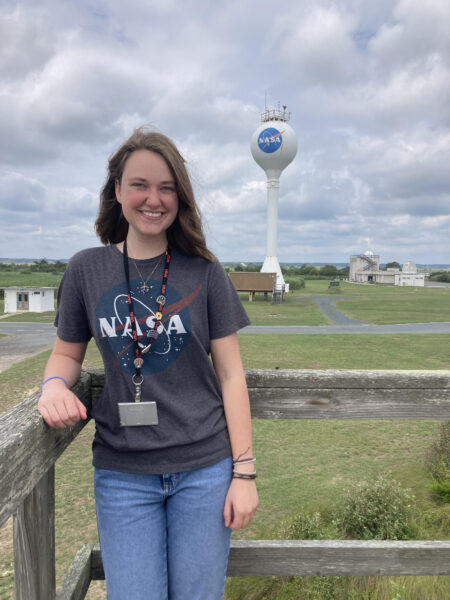
Truman stands in front of a water tower at Wallops Flight Facility on July 18, 2024.
Have you ever considered the average car or cell phone today would seem like magic to those in the horse-and-buggy era? Or that some of the same people who rode those horse-and-buggy carriages later watched Neil Armstrong step foot on the Moon?
The world has been developing fast enough that science fiction can come into existence in one lifetime. The people at NASA are keeping this fact a reality, and that was something incredibly rewarding to contribute to.
My first assignment was to write about the weird and bizarre things an astronaut might experience at the Moon’s south pole — things that cannot be experienced anywhere humans have explored before.
Artemis, the next planned mission by NASA to send humans to the Moon, is set to land near the South Pole because the craters hold great intrigue and mystery. The Moon has water ice at the depths of some of these craters, which are kept in perpetual shadows due to the low angle of the sun in this region. The inside of these craters are some of the coldest places in the entire solar system.
The naturally alien features of this region means Artemis astronauts will experience some of the strangest phenomena in human history, including a shorter horizon line that makes distance difficult to perceive. Astronauts will encounter statically-charged dust that seems soft like baking powder, but the deceptive dust is a wolf in sheep’s clothing — it’s razor sharp.
I got the opportunity to sit down with scientists whose main research focused on Moon dust, or regolith. I never realized how much science there is behind a tiny grain of dust until talking to someone who made it their livelihood. I shook hands with the contamination specialists who will ensure no human impurities taint Artemis Moon samples.
It’s rewarding to know that my writing, interpretation and collection of their knowledge is now available to anyone. Now that information, which was never before published, is accessible to the masses.
When I wasn’t working on my stories, I got my own little taste of Hollywood, so to speak. Goddard has a production studio to film videos for NASA platforms, create social media content and feature scientists for public broadcasting.
Despite the fact that I’ve never used a fancy camera in my life, I got to put the headset and microphone on and feel like a cinematographer.
I manned the camera for two live shots in the summer and sat behind the scenes to listen to the crew coordinate with news stations, one of which was broadcast to Salt Lake City.
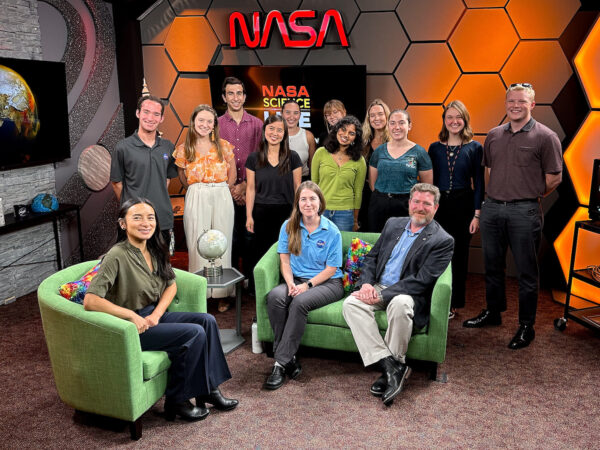
NASA interns stand in Goddard’s studio with host and talent.
Many of the NASA employees knew more than I expected about Utah due to the 2023 OSIRIS-REx landing in the west Utah desert. Those who traveled there for the landing witnessed the collection of the probe. One member of the film crew tried to describe where he visited while in Utah and was plagued by the universal Utahn experience of trying to pronounce our city names. “Tool-y” was my personal favorite.
OSIRIS-REx was the first return mission to an asteroid. Once the sample was collected from the asteroid Bennu, the capsule returned and has since been analyzed at various labs.
On an intern field trip to the Smithsonian Museum of Natural History, our cohort got to see a grain of the sample and hear from the curator of the display. We were surprised with an opportunity to hold a piece of the Moon and a piece of Mars in one of the museum’s restricted areas.
A four-hour bus ride away lay the island of Wallops Flight Facility in Virginia. After playing numerous car games with other interns, we made it to the WFF visitor center. The control room was unreal. To see the room where the iconic countdown takes place was a dream.
Afterward, we got special access to see the launch pads way out on the island. Two green road signs were set up just off the launchpad with arrows pointing towards them like street signs. One read, “International Space Station ON-RAMP” and the other, “Moon Ahead.” I supposed neither were technically wrong, and both led to great photo ops.
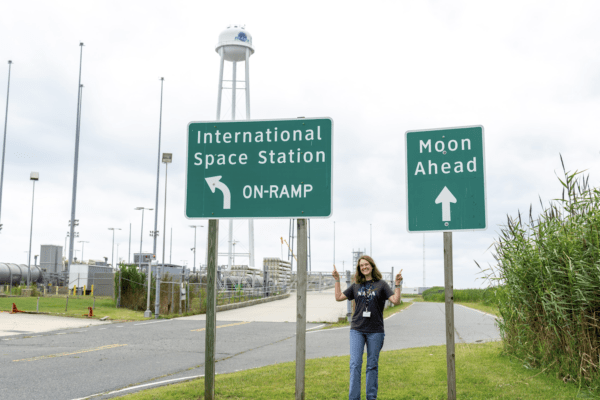
Avery Truman stands between two road signs at the Wallops Flight Facility on July 18, 2024.
My second major project was to write a feature on what materials would be used on the upcoming DAVINCI mission to Venus, one of the most hostile places for machinery to visit.
The thing about writing a good story is you need to become an expert in a matter of weeks, or even days, on a topic professionals spent years learning.
After my first draft, my mentor recommended I get more excited about Venus. I didn’t really understand what she meant. My writing was solid, and the facts were there. It was hard to take the criticism from someone I looked up to so highly.
But, I did what she asked. I watched documentaries, listened to podcasts and spoke to more engineers about the planet instead of the mission. I even volunteered to speak at a Goddard TED Talk-style event about why venturing to Venus is important.
Near the end of my internship, I finally sent her one of my last drafts of the story. She gave me one of the best compliments I could have received at the time. She said it was clear in my writing I was passionate about Venus.
My DAVINCI adventures took me all across campus, and sometimes beyond when I began daydreaming about potential story angles to highlight “Earth’s evil twin.”
Venus got the nickname because it’s similar to Earth in size and location. Originally, we thought Venus was a lush jungle planet with alien species roaming the leafy brush.
Ancient Venus may have had an atmosphere full of water vapor that eventually formed into shallow liquid oceans. Today, its atmosphere is full of CO2 and thick sulfuric acid clouds. How did a planet so like Earth in size and location turn out so different?
For parts of the process, I felt like I became part of the DAVINCI team. I sat in on their new recruit briefings, got to know their principal investigator and joined a tour where I saw some of the prototype materials.
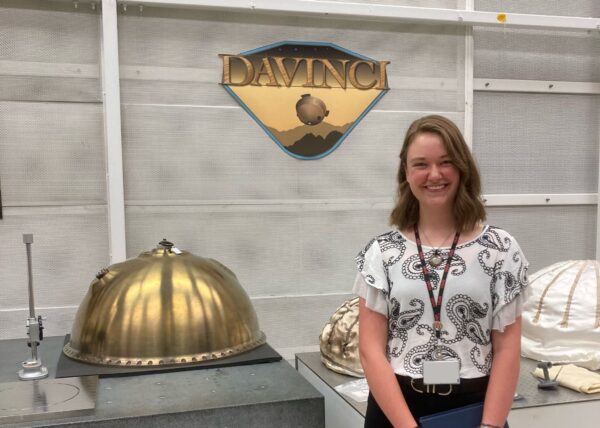
Truman stands next to a DAVINCI probe prototype display at NASA Goddard Space Flight Center on June 26, 2024.
Our last field trip of the summer was to NASA Headquarters. It was almost my last day, and I was feeling sentimental. The summer flew by with no hope of me catching up to it. When I reflect, I wonder if it even happened.
HQ had a dark room that projected interactive images onto the walls and floor. Laughing in the falling light with my new lifelong friends, I considered how everything and everyone sharing this planet is a part of a living, breathing system. My perspective as an environmental studies major mixed with the endless wonder of space I was surrounded with reinforced how important it is to keep that system breathing.
There were many experiences that changed my perspective and people who had an impact on me. From my mentors who pushed me to fill my potential to the NASA employees who took time out of their busy day to chat with an intern and those at the Utah Space Grant Consortium who cheered me on from home along the way.
Now that I’m back in my neck of the woods, my friends and coworkers never miss an opportunity to remind me, sometimes at embarrassing moments, that I work for NASA.
The connections I made led to another internship writing for NASA’s Goddard Office of the Chief Technologist remotely, so I can keep reaching those stars while remaining where I’m pulled, near the spot where the sagebrush grows.

